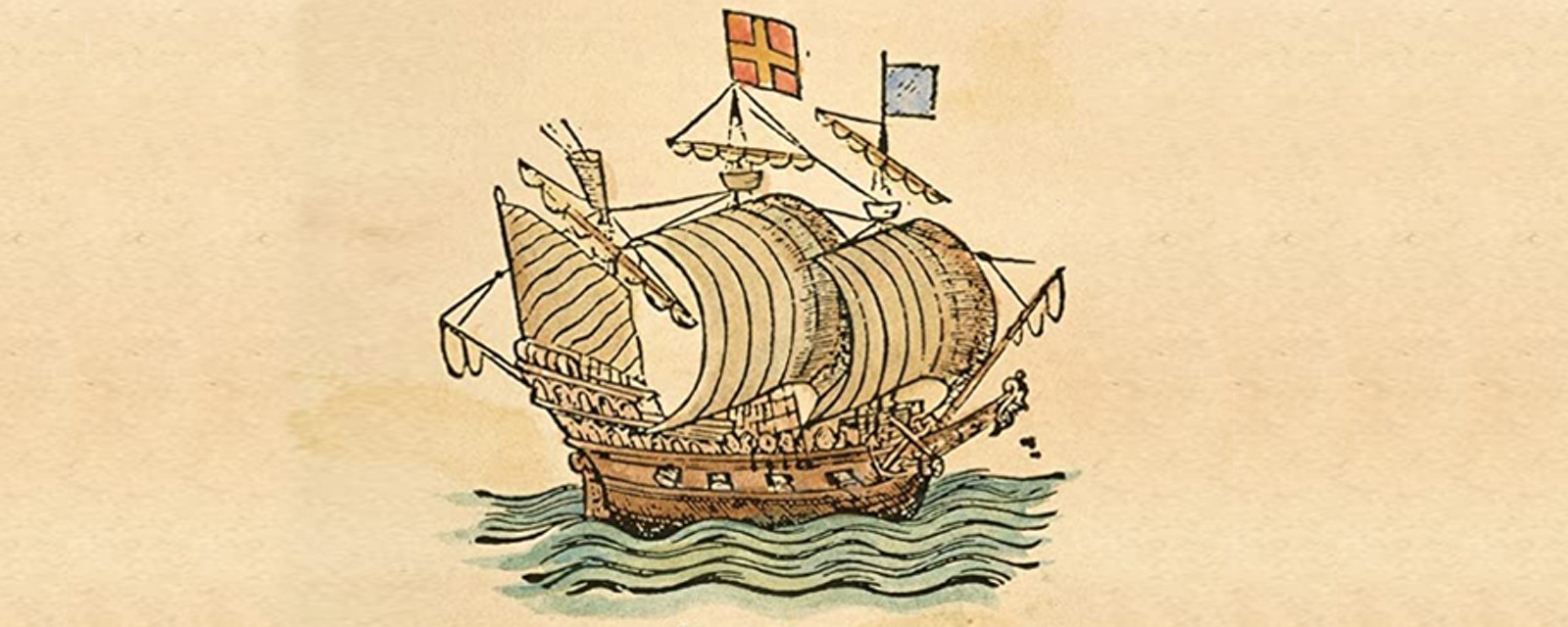The Virginia Company of London
The Virginia Company was in operation for less than 20 years but was an important step in the growth of the British Empire, and it set the foundation for the English colonisation of the American mainland.

This illustration is from Nova Britannia, a Virginia Company promotion pamphlet written by Robert Johnson and published in London in 1609. Johnson described the colony as a place of peace and posterity, where the native people were happy to receive English settlers.
Investor confidence in the Virginia Company waned with the initial disappearance of the Sea Venture but it also took a further knock when Sir Thomas Gates arrived back in London in late 1610 with tales of an impoverished colony. Investors in England began to realise that quick profit was not possible: there was no gold no be found, nor trade with the indigenous people possible. The best possibility was to grow crops but they would take time to reach a level sufficient to yield a profit. The merchants who funded the Virginia Company were traders who sought an early profit. They were experienced in creating trading bases in overseas places but not in farming, which would need time and considerable investment. Without the promise of quick profits the company struggled to attract new investors or retain solvency.
The third charter of 1612 also included the possibility for the Virginia Company to raise new funds by holding lotteries. Three initial lotteries took place between March 1612 and November 1615 but were not a great financial success and were mired in rumours of corruption. Nevertheless, it was the best chance to raise funds, so the company changed tack and engaged two men to travel the country operating a continuous lottery. To prevent accusations of fraud, at each town the tickets were mixed in the presence of the city’s elders and drawn by a child. The lotteries became financially successful for the company but earned it a poor reputation for taking money from those who could least afford it. They were criticised in Parliament in 1621, when Sir Lionel Cranfield proclaimed: “Let Virginia lose rather than England”. The lotteries were soon banned by the King.
From 1616 the Somers Island colonists began importing slaves, initially as pearl divers and to search shipwrecks. The first two were a native American and a negro, the latter being the first African slave in the English colonies. Three years later more were brought to the plantation of the Earl of Warwick, an investor in the Somers Island Company, by the privateer Daniel Elfrith. By that time there were at least 50 enslaved workers on the islands, captured from the Portuguese or Spanish.
John Rolfe established a plantation along the James River, about 30 miles upstream of Jamestown, and sowed some Venezuelan tobacco he had obtained from Trinidad. It was relatively cheap to produce and did not require a high initial investment in expensive equipment. The first crop was exported to England in 1614. New plantations were created along both sides of the river. Rolfe and other settlers began exporting large quantities and commercial tobacco agriculture became the basis of the income of the settlers around the Chesapeake Bay area.
In November 1618 Smythe and Edwin Sandys, as well as the London merchants John and Nicholas Ferrar, drew up the Great Charter. It was a set of instructions for self-governance of Virginia, which was to become important for the future North American colonies.
Settlements required manual labourers of various types and thus colonists were sought in England, where there was a surplus of labour, to carry out the work. The Virginia Company was cash-poor and in ever greater debt but, as long as they could push back the natives, could acquire an abundant amount of territory in North America. They therefore devised the ‘headright’ system, whereby anyone who could pay for their own voyage, and thus relieve the company of its largest expense, that of transportation, would be compensated with 50 acres of land. The settler was thereafter required to pay the company a quit-rent of one shilling per year. Most of those who emigrated were too poor to pay for their voyage so they were instead transported there by London merchants who were sailing to Virginia with provisions. It was therefore the London merchants who acquired land through headright and thus built up large estates in the colony. To reduce costs further, company officers in Virginia were paid in land grants.
To further attract labourers to the colony, in 1618 a scheme was devised of indentured servitude whereby those who emigrated at the company’s cost would be bound to the company for seven years. This was perhaps an adaption of the traditional English system of servitude that was common for wage-earning agricultural workers, as well as the trade apprenticeships in English towns. At the end of their term the servants were promised a share the anticipated profits of the company. A variation of the indentured servitude system was later adapted throughout the English colonies of the Americas.


